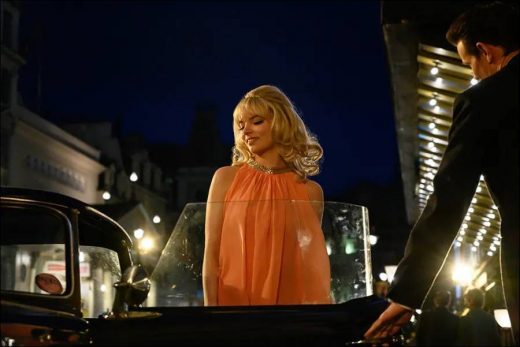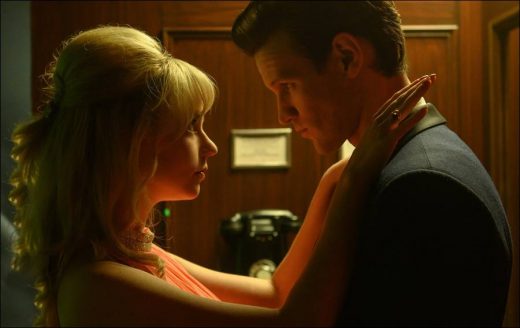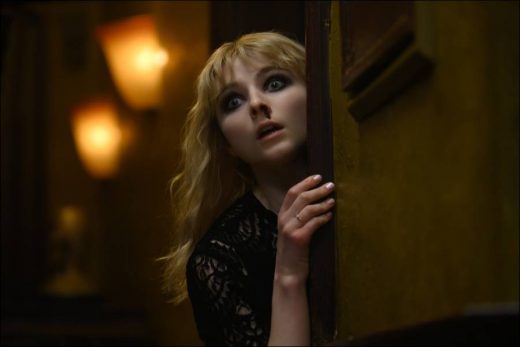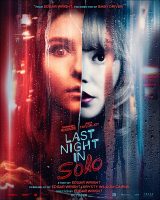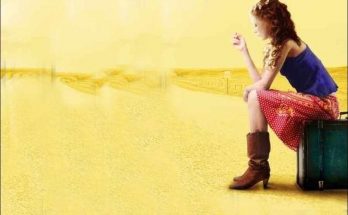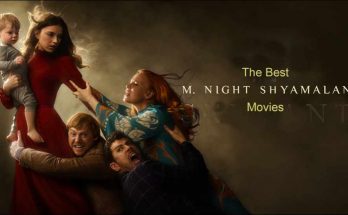“You know where to find me.” This sentence, which is one of the lines repeated in the echo tape throughout the movie, indicates a search by its very nature. Last Night in Soho – Last Night in Soho explores a very specific period in the history of cinema by making use of this quest, the personal interests and characteristics of the main protagonist, Ellie.
Edgar Wright, who comes before us with a new “good idea movie” that we are accustomed to, awakens the “ghosts” of the region’s resplendent period, lying somewhere underground in London’s Soho neighborhood, which also gave the film its name, and brings them face to face with the legacy of that period left today. The meeting begins when Ellie, a promising young fashion designer with her interest in the popular culture of the 1960s and the creativity she was developing with inspiration from that period, moved from the rural part of the country to this region after she won the London Art School. Even if this meeting is not a confrontation with the past, Last Night in Soho knows very well where to find both questions and answers.
I think if I had to describe Edgar Wright in one sentence, I would say “the director of films that are very well designed on paper and work well in editing”. After all, his filmography consists of well-written designs that embrace the phrase it has at its core and put the tumultuous worlds around it into the context of that text, regardless of the pattern it chooses to take part in. To elaborate a little further, it can be said that Wright’s foray into the big screen began with genre parodies, and even more daringly, genre pastiches.
It is possible to characterize each of his films as original productions that, at worst, bring new interpretations to the categories they fall under, but can often be mentioned alone with their transformative auteur touches. In his career, which has been going on since the western comedy A Fistful of Fingers (1995), which he completed on a very low budget at a very young age, he has always had good ideas from parodies of zombie, detective, alien, comics and heist movies, always succeeding in polishing his own non-conceptual main text. Now, with Last Night in Soho, he focuses on a specific period, London of the 1960s, where he was very curious, using elements of psychological thriller and horror genres.
Those ‘Good Old’ Days
To get rid of the perception created by the last sentence, let me start by saying that the story takes place today, not in the 1960s. In fact, Wright is opening the movie to use this illusion, in the room of Ellie (Thomasin McKenzie), who lives with her grandmother in a small town in the countryside of England, which looks like it’s from the 60s.
The biggest dream of the young woman, who lost her mother at a young age, is to live as a successful fashion designer in the London of the 1960s, which was her dreams. Some of this is heralded soon after the doorbell rings, and as soon as Ellie hears that her application to art school in London has been accepted, she packs her bags and moves to that magical big city. While she’s trying to capture something of the sparkling Soho district that had its heyday about sixty years ago, this new world isn’t quite like the one Ellie had imagined.
At this point, the familiar “new school environment”, “bad friends experiences” and “a friendly Romeo coming out of the fog” clichés make the audience ready to take a position in the ranks behind Ellie. Because if everyone is ready, we start watching a new Edgar Wright movie instead of any Step Up (2006) or Fame (1980) adaptation!
Actually, I use the excited announcement tone a little sarcastically and I will explain the reasons for this at the end of the article. After this classic construction I mentioned, Last Night in Soho, whose entire focus is shaped on the space, is breaking into its tracks. Unable to endure her dorm life any longer, Ellie keeps an apartment nearby. He gets the opportunity to look at London from an “old-fashioned” window, much closer to his dreams, in the attic room of one of the old London buildings that has not been restored.
Maybe this is where he’ll find what he’s looking for. From now on, I will talk about the basic structure of the film and the obstacles it faced while advancing towards this cause, by remaining silent as long as it does not contribute to what I have to say about the contents of the film. Because the two worlds that collide in the sentence of the movie realize their first combination at this very point. The mirror reflections, which are frequently used in the design of the film, which can be seen in the viewing, play the role of a vehicle in this merger.
it has been seen as a portal for many cultures or myths throughout history, for Last Night in Soho, these reflections are more concerned with the city culture, which it worries about itself. It is a very good choice to go to the past of the big city center, which lived its golden age with its shining streets, legendary nightclubs, cinemas and shops.
Known for reflecting the identities, histories, and cultures of urban centers in a way that almost reminds me of Benjamin’s quotes, the showcases reflect Ellie’s face. These “reflections”, which are used step by step with the task of connecting with the past from the very beginning of the movie, finally bring us Soho headliner Sandie (Anya Taylor-Joy).
The popular culture references, which enrich every work of Edgar Wright in detail, are scattered all over the place, as can be expected, in Last Night in Soho. This time, these references are burdened with the men’s films of the 1960s that inhabited London, the testosterone-scented nightlife known as the “golden age”, the giallo films where women can exist by screaming and splashing blood, and the order in which some “important” men pass through the bedrooms of the career ladder. imposes it on the art community of the period, which had a motto.
So this time, those fun Wright references (with the exception of a few small examples like The Craft reference) are replaced by sarcastic salutes. By reminding in every detail the main issue on which the film’s text is built, he puts this male world at its target point. Wright, who fed the feeling of nostalgia frequently throughout his career (like his eponymous friend Quentin Tarantino), gave the most competent examples of the category called “reference cinema”, so to speak, and seems to have paid attention to the negative criticism that has been repeated throughout his career, mostly among his appreciations: Continuous the fact that she tells men’s stories…
This time, sitting at the head of the script with Krysty Wilson-Cairns, whom she takes with her, she leaves the main scene, consisting of the main protagonist and her partner in front of the mirror, to women, and discusses how those “good old” days, which can usually be remembered with a smile, can look like a nightmare for any woman. He’s designing a horror movie. For this reason, Ellie, who is the typical heroine of horror films, who both bravely goes against it to solve the events and is the victim, actually shares Edgar Wright’s passion for nostalgia and confronts the ghouls of bitter realities instead of a rosy past that she dreams of as it takes place in popular culture, in the final analysis.
In fact, Last Night in Soho is a familiar Edgar Wright movie with its design on paper and adding its own touches to the periods/genres it deals with. However, the feeling of being guided by a different rhythm and a different flow draws attention to everyone watching. As I described at the beginning of the article, it is possible to feel as if everything is not working smoothly this time, almost from the middle of the movie.
The main technical reason for this, of course, is that the director turned to a different choice in the editing of the film. In his own words, Last Night in Soho is dominated by a “flowing” narrative that moves outside of a rhythmic mathematics. This design choice, which may be considered logical due to its ties to the content and text, does not show a positive response on the screen. I think it is an experience we have witnessed for the first time in Wright’s career, that the film dropped to such an extent that at some point one would say “I wish we had watched a new Step Up movie” and that it lost the interest/tension it created on the audience very early.
When we think about the main focus of the movie, the portal point that we call “here it starts” comes so late that the transition from one world to another, which we have been slowly warming up until that moment, is quite problematic. Also, the highly predictable twists he used as a weapon on his way to the finale and his over-explaining of every development are just enough sloths to put Last Night in Soho off the radar of Wright fans.
Despite all these fundamental flaws, I think I realized that there is a harmony between the sentence that is the basis of what I really like in the director’s cinema and the pastiche worlds that he tries to fit it into. I think it is the real plot twist for Last Night in Soho that such a pop reference-savvy male creator is constantly aiming at other respected male creators and their era, and I put it aside with a “smile” to commemorate the film with its mischievous side that tries to entertain the audience rather than make it admire.
Last Night in Soho (2021)
Directed by: Edgar Wright
Starring: Thomasin McKenzie, Anya Taylor-Joy, Matt Smith, Diana Rigg, Rita Tushingham, Terence Stamp, Jessie Mei Li, Michael Ajao, Synnøve Karlsen, Margaret Nolan, Lisa McGrills
Screenplay by: Edgar Wright, Krysty Wilson-Cairns
Production Design by: Marcus Rowland
Cinematography by: Chung-hoon Chung
Film Editing by: Paul Machliss
Costume Design by: Odile Dicks-Mireaux
Set Decoration by: Judy Farr
Art Direction by: Victoria Allwood, Tim Blake, Emily Norris
Oli van der Vijver
Music by: Steven Price
MPAA Rating: None.
Distributed by: Focus Features (United States), Universal Pictures (international)
Release Date: September 2021 (Venice), October 29, 2021 (United Kingdom)
Views: 147
